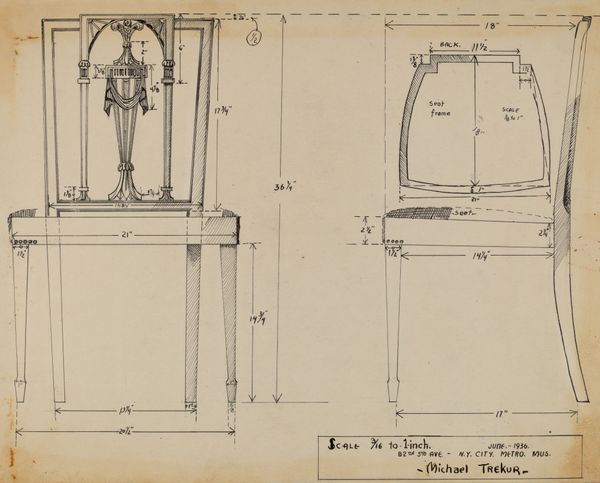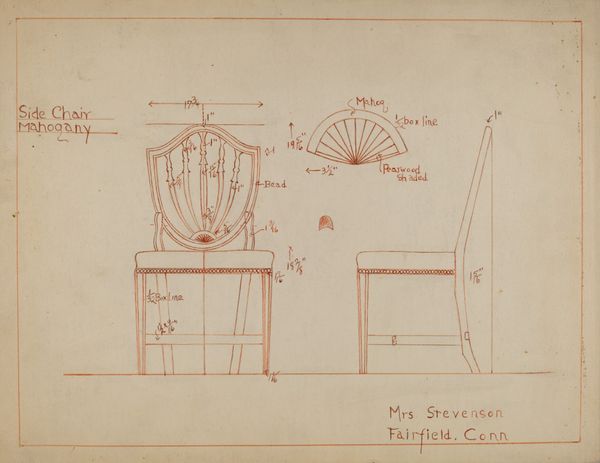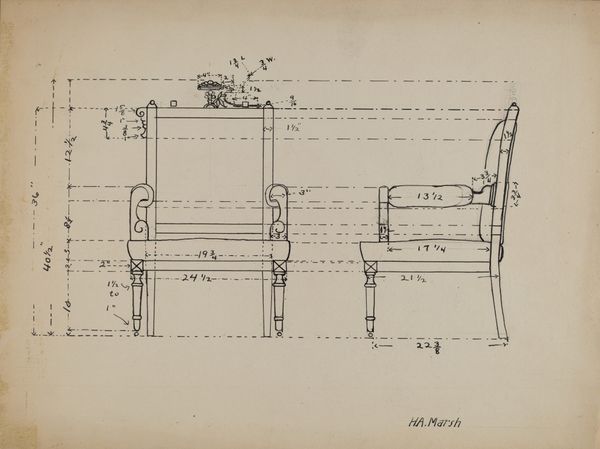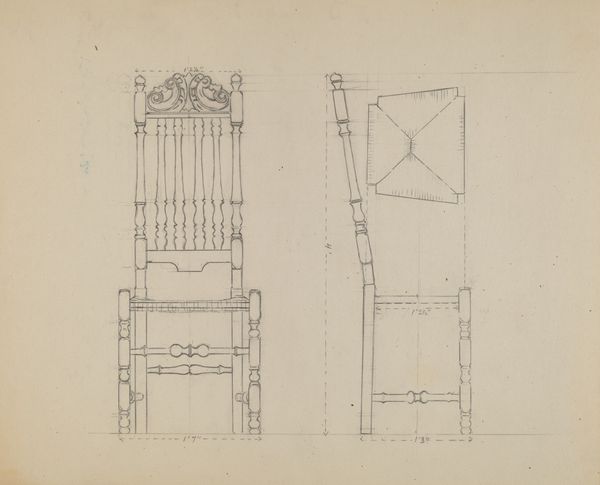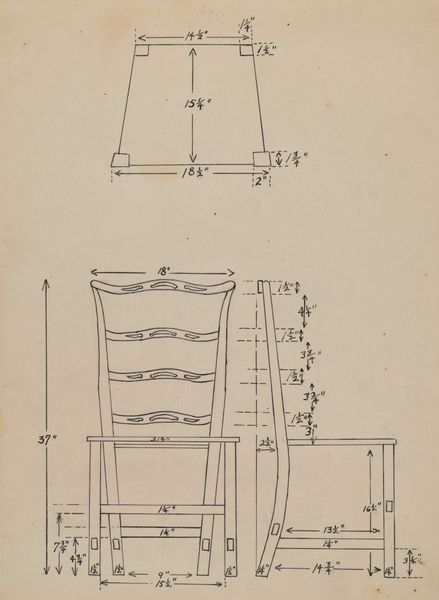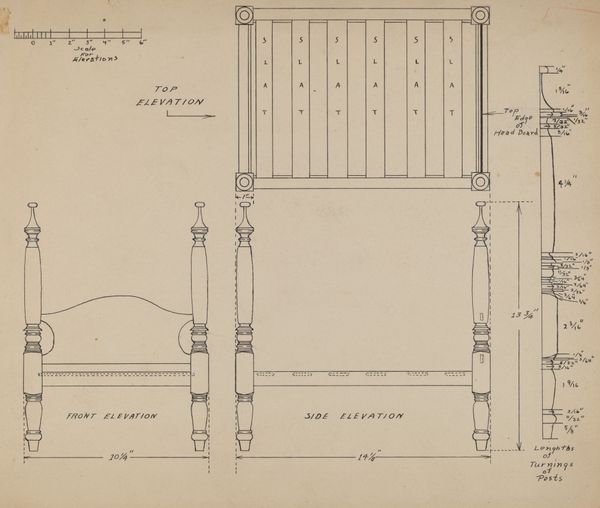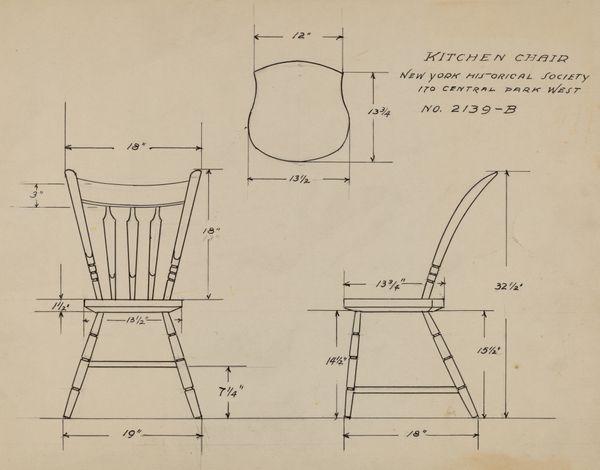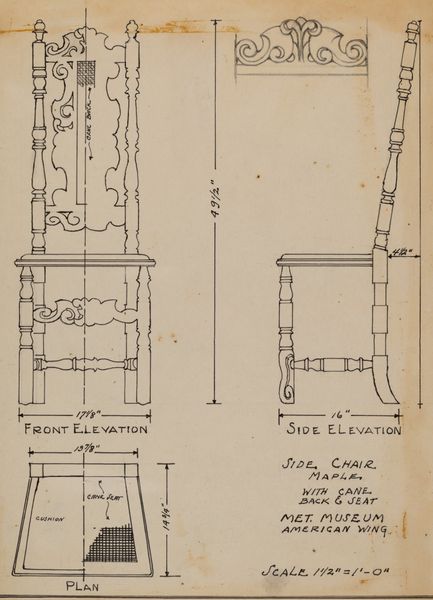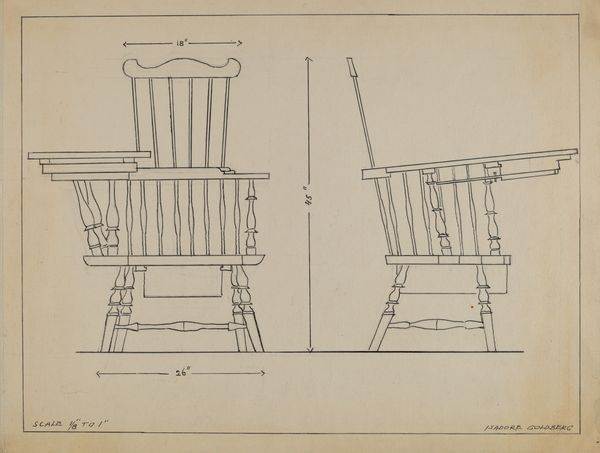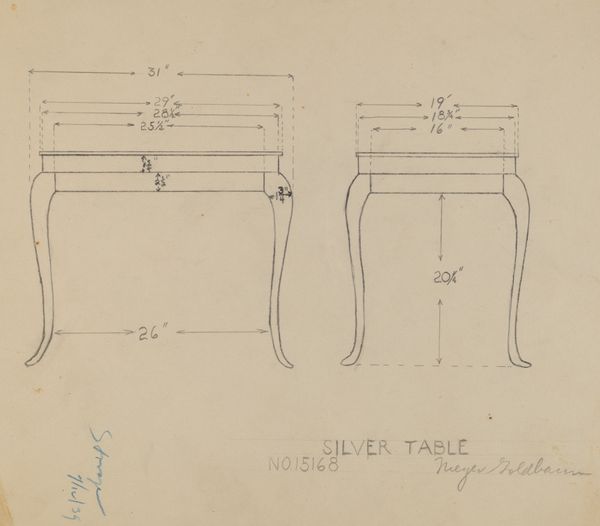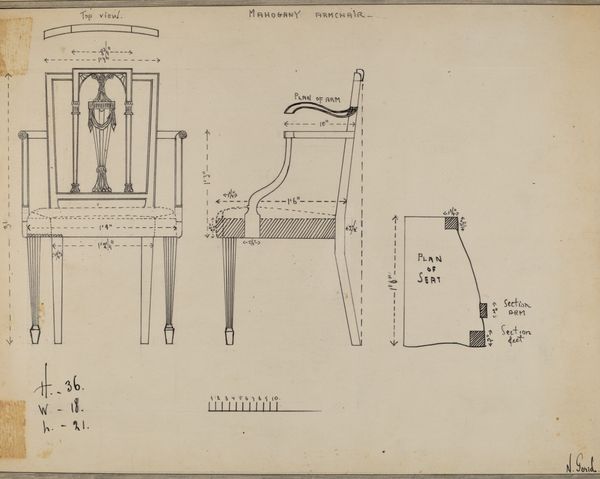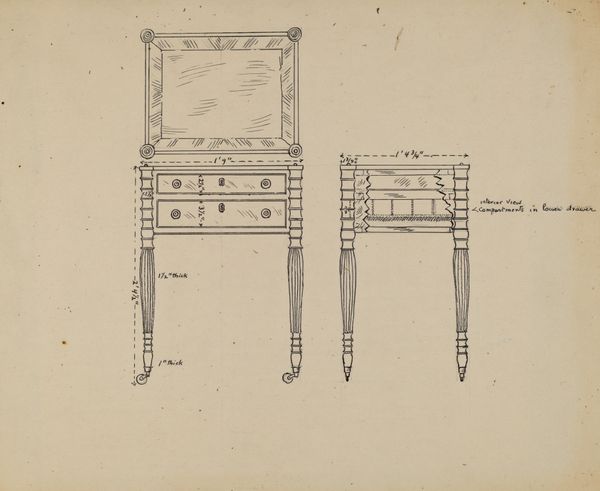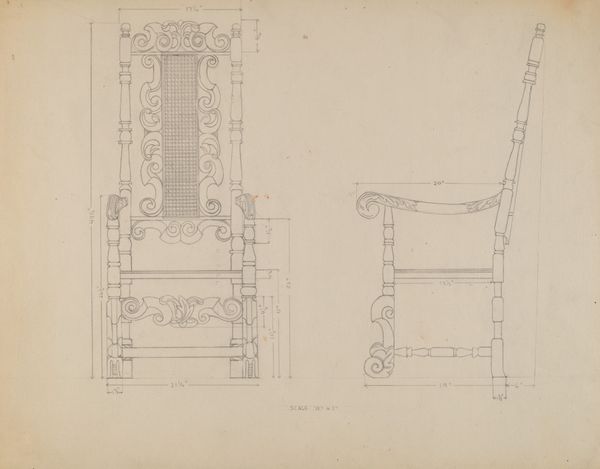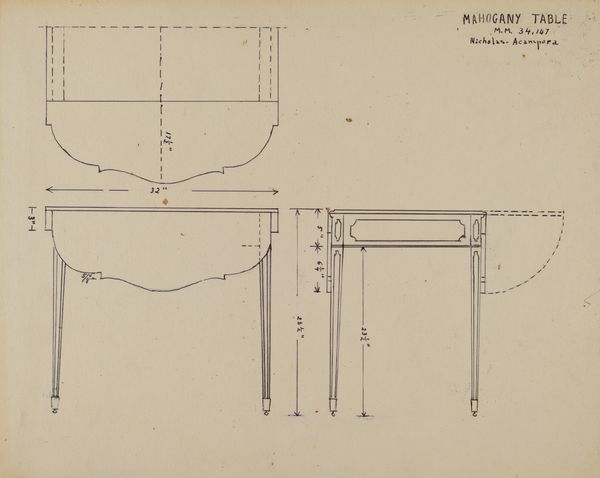
drawing, architecture
#
drawing
#
geometric
#
architecture
Dimensions: overall: 22.3 x 28.2 cm (8 3/4 x 11 1/8 in.) Original IAD Object: 37"high, 24"wide, 19"deep.
Copyright: National Gallery of Art: CC0 1.0
Editor: This is a drawing titled "Armchair," circa 1936. It seems to be an architectural or technical rendering. It uses simple lines to define what appears to be a very ornate armchair design. I'm interested in why it's considered art rather than a blueprint. What do you see in this piece? Curator: I see a challenge to the traditional hierarchy between art and design. This isn't just a functional drawing; it's a document of labour, process, and even aspirations. Look at the level of detail, the meticulous measurements – they speak to the craft involved in even planning a piece of furniture. Editor: So, it's more about the "making" of the armchair than the armchair itself? Curator: Precisely. We can consider the social context, too. In 1936, design was rapidly evolving. Mass production versus handcrafted, the role of the designer… all those questions are implicit here. Who was this drawing made for? A factory? An individual craftsman? What was their intended audience and purpose? Editor: Good point. I wonder about the ornate style too; the maker has integrated what look to me to be quite old fashioned stylistic motifs into a modern construction blueprint. Why not design something totally modern in line with the aesthetics of mass production? Curator: What you observe here, reveals tension and negotiation around taste and consumerism; maybe its an exercise to find luxury amongst hard times. How accessible would a chair like this have been and to whom? It prompts us to ask about material constraints and the social life this chair, as a design object, might have inhabited. Editor: That’s interesting, I hadn’t thought of it in that way. I see it as a blueprint now, yes, but definitely also more than just a diagram. Curator: Exactly, and understanding its materiality and context challenges simple definitions of 'art'.
Comments
No comments
Be the first to comment and join the conversation on the ultimate creative platform.
